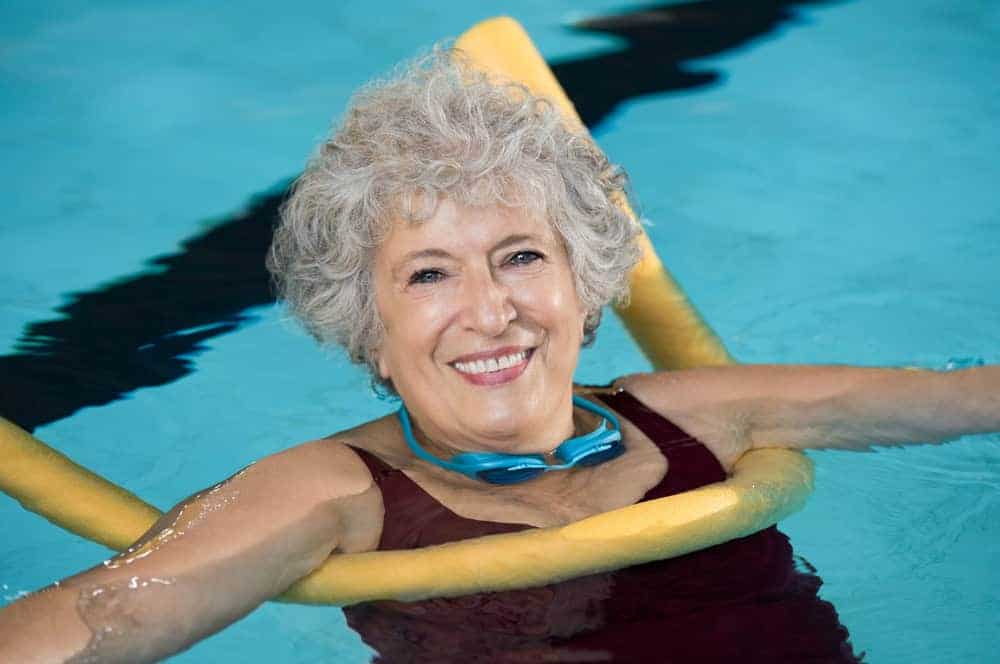
Have you ever wondered how seniors can stay active and independent despite the challenges of aging? Outpatient physical therapy is the answer. This specialized care helps older adults regain strength, improve mobility, and manage chronic conditions. It’s not just about recovery; it’s about enhancing the overall quality of life.
But why is outpatient physical therapy so crucial? It addresses the unique needs of seniors in a flexible, supportive environment. From post-surgery rehab to managing arthritis, it provides targeted interventions that make a real difference. Let’s explore the top five reasons why outpatient physical therapy is essential for senior care.
What is Outpatient Physical Therapy?
Outpatient physical therapy involves treatments and exercises performed outside a hospital setting. Patients visit a clinic or a physical therapist’s office for their sessions. It is non-residential care where seniors receive therapy but return home afterward.
Outpatient physical therapy focuses on improving mobility, strength, and overall function. It helps patients recover from surgeries, manage chronic conditions, or improve general physical health. Sessions typically include exercises, manual therapy, and sometimes, equipment-based interventions.
Differences Between Outpatient and Inpatient Physical Therapy for Seniors

Inpatient physical therapy is not the same as outpatient physical therapy. Let’s have a look at their differences:
| Aspect | Outpatient Physical Therapy | Inpatient Physical Therapy |
|---|---|---|
| Location | Clinic or physical therapist’s office | Hospital or rehabilitation facility |
| Duration | Short, regular sessions | Extended stay, often several weeks |
| Living Arrangements | Patients return home after each session | Patients stay at the facility until discharge |
| Cost | Typically lower, pay per session | Higher, covers accommodation and comprehensive care |
| Accessibility | Requires transportation to and from the clinic | No transportation is needed as patients reside on-site |
| Suitability | Ideal for those with moderate needs or who can travel | Best for severe conditions requiring constant care |
| Social Interaction | Opportunities for socialization outside therapy | Limited to interactions within the facility |
| Personal Environment | Allows seniors to remain in familiar surroundings | Requires adaptation to a new, temporary environment |
What Services Do Outpatient Physical Therapy Offer?
Outpatient physical therapy plays a crucial role in senior care by providing a broad spectrum of services designed to address both common and specialized health concerns.
Comprehensive Therapy Services
Outpatient physical therapy provides a holistic approach to senior care, encompassing a range of interventions. It aims to restore function, reduce pain, and enhance overall well-being. It includes:
- Initial Assessments and Evaluations: Thorough assessments to determine the patient’s condition, limitations, and goals.
- Individualized Treatment Plans: Customized plans based on the assessment results, are designed to address the unique needs of each patient.
- Education and Training: Informing patients and their families about the condition, treatment options, and self-management strategies.
- Progress Monitoring: Regular evaluations to monitor progress and adjust treatment plans as needed.
Specific Treatments for Common Conditions in the Elderly

Outpatient physical therapy is particularly beneficial for managing conditions prevalent among seniors.
A few examples of specific treatments include:
- Arthritis: Techniques such as joint mobilization, stretching exercises, and pain management strategies to reduce stiffness and improve joint function.
- Lymphedema: Specialized treatments like manual lymphatic drainage, compression bandaging, and exercise to reduce swelling and improve lymphatic flow.
- Musculoskeletal Injuries: Rehabilitation programs involving strength training, flexibility exercises, and modalities like ultrasound and electrical stimulation to aid recovery and prevent further injuries.
Specialized Services in Outpatient Physical Therapy

Outpatient physical therapy also offers specialized therapies that cater to the unique needs of seniors:
- Aquatic Therapy: Utilizes the buoyancy of water to reduce stress on joints and muscles, making it easier and less painful for seniors to perform exercises. This therapy is particularly beneficial for those with arthritis or severe musculoskeletal conditions.
- Manual Therapy: Hands-on techniques such as massage, joint mobilization, and manipulation to relieve pain, improve mobility, and enhance muscle function. This approach is effective for treating chronic pain and stiffness.
- Therapeutic Exercise: Customized exercise programs aimed at improving strength, flexibility, balance, and coordination. These exercises help seniors maintain independence and reduce the risk of falls and injuries.
5 Benefits of Outpatient Physical Therapy for Seniors

Outpatient physical therapy offers many benefits for seniors, promoting healthier and more independent living. By addressing specific needs and conditions, it ensures that older adults can enjoy a higher quality of life.
Here are five key benefits that make outpatient physical therapy a crucial aspect of senior care.
Improved Mobility and Range of Motion
As we age, our joints and muscles lose flexibility and strength, reducing mobility. Outpatient physical therapy focuses on exercises that stretch and strengthen muscles, improving flexibility and range of motion.
Therapists use targeted techniques to address stiffness and joint restrictions. This enhances overall movement and reduces the risk of mobility-related issues. Better mobility allows seniors to perform daily activities with greater ease and confidence.
Pain Management and Relief
Chronic pain is common among seniors, often resulting from conditions like arthritis or past injuries. Outpatient physical therapy incorporates various pain management strategies, including manual therapy, heat/cold treatments, and specific exercises designed to alleviate pain.
Therapists work closely with patients to develop individualized plans that target the sources of pain. This reduces discomfort and decreases the reliance on pain medications, leading to a more active and fulfilling life.
Prevention of Falls and Injuries
Falls are a leading cause of injury among older adults. Physical therapy plays a critical role in fall prevention by improving balance, strength, and coordination. Therapists conduct thorough assessments to identify fall risks and design personalized exercise programs to enhance stability.
Training in safe movement patterns and the use of assistive devices also helps in reducing fall risks. By preventing falls, physical therapy helps seniors maintain their independence and avoid serious injuries.
Enhance Functional Independence in Daily Activities
One of the main goals of outpatient physical therapy is to help seniors maintain or regain their independence. Therapists focus on functional training that targets the specific activities of daily living (ADLs), such as dressing, bathing, and cooking.
Customized exercises and adaptive techniques are taught to improve the performance of these tasks. This approach empowers seniors to manage their daily routines more effectively, fostering a sense of independence and self-reliance.
Boost Overall Well-being and Mental Health
Outpatient physical therapy not only addresses physical health but also contributes significantly to mental and emotional well-being. Engaging in regular physical activity through therapy can reduce symptoms of depression and anxiety. It promotes the release of endorphins, enhancing mood and overall outlook on life.
The social interaction with therapists and other patients during sessions also helps combat loneliness and social isolation. This holistic approach ensures that seniors experience a balanced improvement in both their physical and mental health.
Importance of Tailored Senior Care in Outpatient Physical Therapy

Personalized treatment plans are crucial for seniors because they address specific health concerns and physical limitations. Each senior has unique needs based on their medical history, lifestyle, and personal goals. A one-size-fits-all approach does not work in senior care.
- Detailed Assessments: Outpatient physical therapists assess each senior’s condition in detail. It includes considering factors like existing medical conditions, pain levels, and mobility restrictions. This allows for a personalized treatment plan targeting specific issues.
- Customized Plans: Therapists create plans that address individual needs. For example, a senior recovering from hip surgery will have different requirements than one managing arthritis.
- Realistic Goals: Personalized plans help in setting realistic and achievable goals, ensuring progress is monitored and adjusted as needed. This dynamic approach helps prevent injuries and promotes steady improvement.
How Outpatient Physical Therapists Work With Seniors To Achieve Their Specific Goals
Outpatient physical therapists play a vital role in helping seniors achieve their health and wellness goals.
Here’s how they do it:
- Comprehensive Evaluation: The process begins with a detailed medical history, physical examination, and functional assessments.
- Understanding Personal Goals: Therapists work closely with seniors to understand their goals, whether it’s walking without assistance, reducing pain, or improving balance.
- Education and Safety: They educate seniors on proper body mechanics and safety to prevent falls and injuries.
- Tailored Techniques and Interventions: Therapists use various techniques, including strength training, balance exercises, flexibility routines, and pain management strategies, all tailored to each senior’s needs.
- Regular Follow-ups: Regular sessions track progress, adjust treatment plans, and provide motivation and support. It helps seniors stay engaged and committed to their recovery and wellness journey.
How to Access Outpatient Physical Therapy Services for Seniors
Outpatient physical therapy services can greatly enhance the quality of life for seniors. Knowing how to access these services is essential for effective care. Here are the steps to ensure your loved ones receive the best possible support.
How to Find Outpatient Physical Therapy Clinics Near Seniors
Finding a reliable outpatient physical therapy clinic is the first step toward effective senior care.
- Consult with a Primary Care Physician
Ask the primary care physician for a list of reputable physical therapy clinics that specialize in senior care. Physicians often have professional networks and can recommend trusted physical therapy or rehabilitation facilities.
Some insurance plans might require a formal referral from the senior’s physician. This step ensures that the therapy is medically necessary and tailored to the senior’s specific health needs.
- Check Insurance Provider Lists
Insurance providers usually have a directory of clinics. Using one of their recommended providers can significantly reduce out-of-pocket expenses.
Verify what services are covered under the insurance plan to avoid unexpected costs. Some plans may cover only a certain number of sessions or specific types of therapy.
- Use Online Resources
Websites like Healthgrades, Zocdoc, and Yelp provide patient reviews and ratings of local clinics. Look for clinics with high ratings and positive feedback specifically mentioning senior care.
Some professional organizations, like the American Physical Therapy Association, offer search tools to find certified physical therapists in your area.
- Verify Therapist Credentials
Ensure that your chosen physical therapist is licensed by APTA and has completed accredited training programs.
Look for a therapist with additional certifications in geriatric physical therapy, which means specialized training in treating older adults.
- Assess Clinic Facilities
Visit the clinic to check if they have modern and well-maintained equipment. State-of-the-art equipment can enhance the effectiveness of therapy.
The clinic should be clean, and accessible, and have a comfortable waiting area. An inviting environment can reduce anxiety and improve the overall experience for seniors.
Steps to Take to Schedule an Appointment for Outpatient Physical Therapy
Scheduling an appointment requires a few important steps to ensure a smooth process.
- Contact the Clinic
Call or email the clinic to inquire about their services. Ask specific questions about their experience with senior patients and the types of therapies they offer.
Check the availability of appointments to find a convenient time for the senior. Some clinics may have waiting lists, so it’s important to start this process early.
- Obtain a Referral
Many insurance plans require a referral from a primary care physician to cover physical therapy. This referral ensures that the therapy is deemed medically necessary.
The physician’s office can usually send the referral directly to the clinic. Make sure this step is completed before scheduling the appointment.
- Prepare Medical Records
Gather all relevant medical records, including past injuries, surgeries, and current medications. This information will help the therapist understand the senior’s health background.
Bring a list of medications, including dosages, and any previous physical therapy records to the first appointment.
- Discuss Insurance Coverage
Call the insurance company to verify coverage for outpatient physical therapy. Confirm the number of sessions covered and any co-pays or deductibles.
Some insurance plans may require prior authorization before therapy begins. Ensure this step is completed to avoid delays.
- Book an Initial Assessment
Be flexible with dates and times to fit the clinic’s schedule. Early morning or late afternoon appointments might be less crowded.
Confirm the appointment a day before to ensure there are no scheduling conflicts or last-minute changes.
- Confirm the Appointment
Set a reminder to call the clinic the day before the appointment to confirm the time and any necessary preparations.
Ensure the senior is prepared for the visit with comfortable clothing and any necessary mobility aids.
What to Expect During the Initial Assessment and Treatment Sessions

Understanding what happens during the initial assessment and treatment sessions helps set realistic expectations.
- Initial Assessment
The physical therapist will conduct a comprehensive evaluation of the senior’s mobility, strength, balance, and range of motion. This may involve observing the senior walking, standing, and performing specific movements.
The therapist will review the senior’s medical history, including any previous injuries or surgeries. This information is crucial for developing a safe and effective treatment plan.
Together with the senior and their caregiver, the therapist will set realistic and achievable goals for therapy.
- Treatment Sessions
Sessions will include exercises designed to improve strength, flexibility, and balance. These exercises may be performed using resistance bands, weights, and exercise machines. Usually, it starts with the simplest exercises and progresses to more advanced ones depending on the progress outcomes.
The therapist might use techniques such as manual therapy, ultrasound, or electrical stimulation to relieve pain and enhance muscle function. Most importantly, the therapist will educate the senior and their caregiver on activities that can be done at home to complement the therapy sessions.
- Duration and Frequency
Therapy sessions typically last about 45 minutes to an hour. The duration may vary based on the senior’s condition and tolerance.
The frequency of visits will depend on the senior’s needs and progress. Initially, sessions might be more frequent and then reduce as the senior improves.
- Ongoing Evaluation
The therapist will regularly assess the senior’s progress and adjust the treatment plan as needed. This ensures that the therapy remains effective and relevant to the senior’s changing needs.
Open communication between the senior, caregiver, and therapist is necessary. Providing feedback about what is working and any difficulties encountered helps tailor the therapy.
- Preparation for Sessions
Encourage the senior to wear comfortable, loose-fitting clothing and supportive shoes to each session. This allows for ease of movement and exercise.
Ensure the senior is well-hydrated and has eaten a light meal before the session to maintain energy levels.
Involvement of Caregivers in Outpatient Physical Therapy for Seniors
Outpatient physical therapy for seniors is more effective with the active involvement of their caregivers. Caregivers play a pivotal role in ensuring the success of the therapy by providing support, encouragement, and assistance. Their participation can significantly improve the quality of life for seniors and help them regain independence more quickly.
Role Of Caregivers

Caregivers are crucial allies in the outpatient physical therapy journey of seniors. They provide emotional support, motivating seniors to stay committed to their therapy routines. Encouragement from caregivers can boost seniors’ morale. It helps them push through challenging exercises.
Caregivers also assist with logistics, such as transportation to and from therapy sessions. This ensures that seniors attend their appointments regularly. They also help with scheduling, reminders, and managing follow-up appointments.
Moreover, caregivers monitor the senior’s progress and communicate any concerns or changes to the therapist. This close observation helps in tailoring the therapy to the senior’s evolving needs.
Ways Caregivers Can Assist In The Rehabilitation Process At Home
Caregivers extend the benefits of outpatient rehabilitation into the home environment.
- Assist with Exercises: Caregivers help seniors perform prescribed exercises correctly and safely, preventing injuries and enhancing the effectiveness of the therapy.
- Set Up a Safe Space: They create a safe environment for therapy activities by removing hazards, ensuring proper lighting, and providing necessary equipment like resistance bands or exercise mats.
- Establish Consistent Routines: Caregivers aid in establishing a consistent exercise routine, integrating therapy exercises into daily activities to make it easier for seniors to follow through.
- Support Nutrition and Hydration: By preparing balanced meals and encouraging adequate fluid intake, caregivers support the nutritional needs critical for recovery.
Open Communication Between Therapists, Seniors, And Caregivers
Open communication among therapists, seniors, and caregivers is essential for successful therapy outcomes. It ensures that everyone is aligned with the therapy goals and understands the prescribed exercises and activities.
Therapists can provide caregivers with detailed instructions and demonstrations. This helps caregivers feel confident in assisting with exercises and monitoring the senior’s progress.
Caregivers should openly share observations about the senior’s condition, such as pain levels, mobility issues, or emotional states. This feedback allows therapists to adjust the therapy plan as needed.
Regular communication helps in addressing any concerns promptly. It also reinforces a team approach, where everyone is working towards the senior’s well-being.
How to Ensure Quality Care and Long-Term Success in Outpatient Physical Therapy
Outpatient physical therapy is important in maintaining and improving seniors’ health and mobility. To ensure quality care and long-term success in these programs, you need to consider some key factors.

Importance Of Choosing A Reputable Physical Therapist
Selecting a reputable outpatient physical therapy service is the foundation of effective outpatient physical therapy.
Here’s how to make the right choice:
- Certified and Experienced Therapists: Make sure the service has certified and experienced physical therapists specialized in geriatric care.
- Positive Reviews and Testimonials: Look for services with good reviews and testimonials from patients and families.
- Up-to-date Equipment and Techniques: Verify that the clinic uses the latest equipment and evidence-based practices.
- Comprehensive Initial Assessment: A good provider will offer a thorough initial assessment to create a tailored treatment plan.
- Respectful and Empathetic Environment: Choose a provider that fosters a supportive and respectful atmosphere for your loved ones.
How To Ensure Continuity Of Care And Progress In The Rehabilitation Program
Maintaining continuity of care is essential for a successful rehabilitation program.
Here are some ways to ensure ongoing progress:
- Clear Communication: Ensure all healthcare providers involved in the senior’s care communicate effectively.
- Regular Follow-ups and Evaluations: Schedule regular follow-ups to assess progress and adjust the treatment plan as needed.
- Active Participation by Seniors: Encourage seniors to understand and engage in their treatment plans.
- Use of Technology: Utilize patient portals or mobile apps to track progress and communicate with healthcare providers.
- Consistent Adherence to the Plan: Ensure that seniors consistently follow their prescribed therapy and exercises.
Tips For Seniors To Maintain Their Mobility And Independence Post-Physical Therapy
Post-therapy, constant effort is required to maintain mobility and independence. Seniors need to follow some tips to maintain their progress.
- Continue Home Exercises: Stick to home exercise routines prescribed by physical therapists to maintain gains made during therapy.
- Stay Active: Participate in low-impact activities like walking, swimming, or tai chi to keep muscles strong and joints flexible.
- Regular Health Monitoring: Keep regular appointments with healthcare providers to detect and manage any new or recurring issues.
- Healthy Diet: Follow a balanced diet rich in vitamins and minerals to support muscle and bone health.
- Use Mobility Aids: Utilize canes, walkers, or other assistive devices as recommended for safety and confidence.
- Home Modifications: Make necessary adjustments at home, such as installing grab bars, removing trip hazards, and ensuring good lighting.
Conclusion

Outpatient physical therapy is a cornerstone of senior care. It offers numerous benefits that enhance mobility, independence, and overall quality of life. A reputable outpatient physical therapist ensures continuity of quality care. It’s crucial to prioritize all important aspects to ensure the long-term success of outpatient physical therapy programs for seniors.
At Amy’s Eden Senior Care, we believe in Companionship for a Lifetime. Contact us today and let us be your companion in choosing the best outpatient physical therapy services in your area. We ensure that you or your loved one receives the best possible support on the path to recovery and sustained health.





